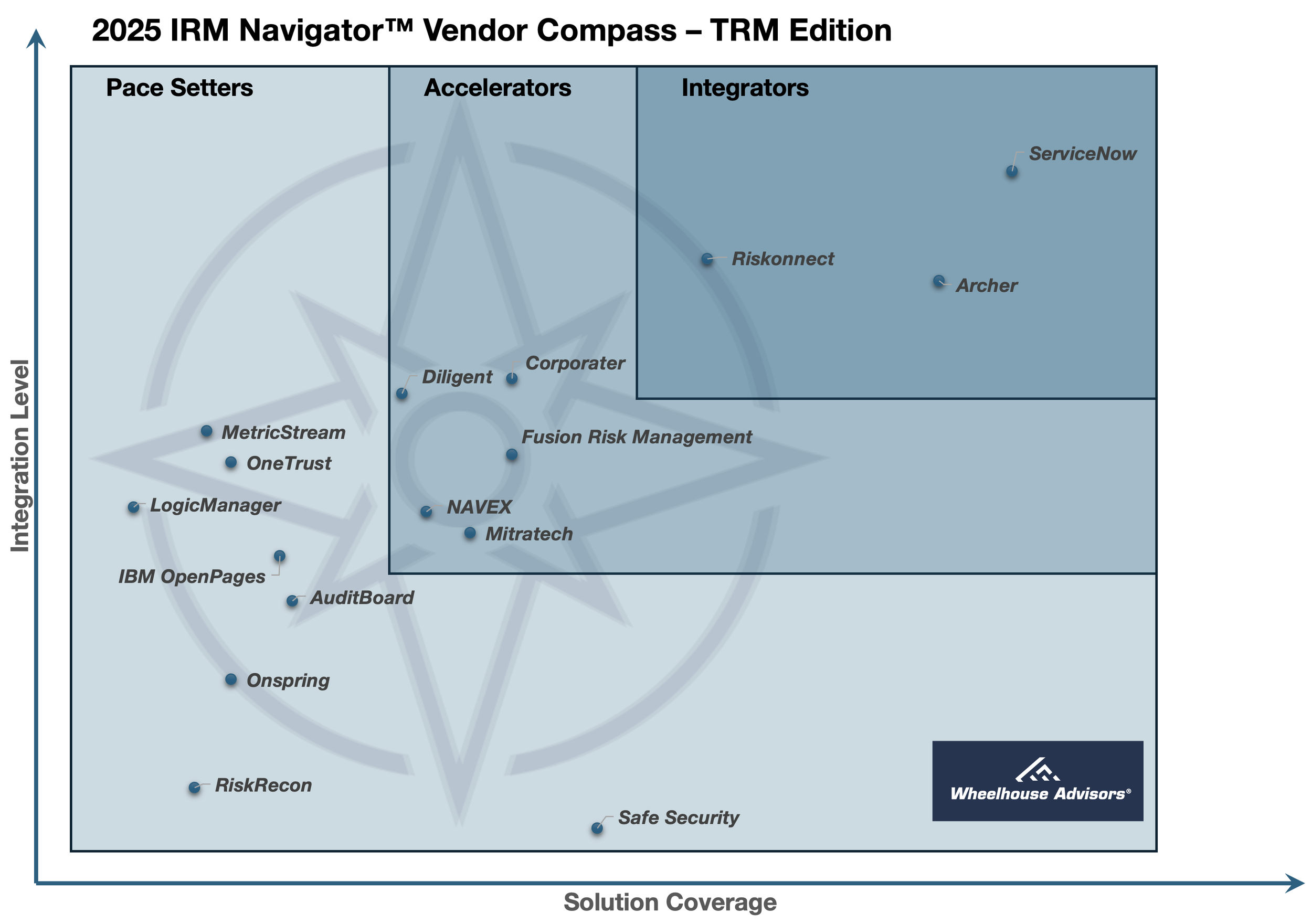 Image 1 of 1
Image 1 of 1


IRM Navigator™ Vendor Compass for TRM - 2025
Technology Risk Management (TRM) is an essential pillar of the IRM Navigator™ Framework, providing a structured and integrated approach to managing technology-related risks across the enterprise. The framework ensures that TRM is not treated as an isolated function but as a critical component of a broader risk management strategy. By embedding TRM into enterprise-wide risk governance, operational resilience, and regulatory compliance initiatives, organizations can proactively manage digital threats, IT vulnerabilities, and evolving cybersecurity risks.
The IRM Navigator™ Framework establishes a holistic structure that aligns technologies, processes, and data across four key risk domains:
Enterprise Risk Management (ERM): Focuses on aligning risk management with corporate governance and strategic business objectives.
Operational Risk Management (ORM): Addresses process failures, supply chain vulnerabilities, and business continuity risks.
Technology Risk Management (TRM): Governs cybersecurity, IT/OT infrastructure resilience, AI risk, and digital transformation oversight.
Governance, Risk & Compliance (GRC): Ensures adherence to regulatory and policy requirements across business operations.
By fostering a unified risk approach, the IRM Navigator™ Framework enhances transparency, accountability, and data-driven decision-making across the organization. This integration enables leadership to mitigate potential disruptions proactively, ensuring a cohesive strategy for risk reduction, regulatory compliance, and business continuity.
Technology Risk Management (TRM) is an essential pillar of the IRM Navigator™ Framework, providing a structured and integrated approach to managing technology-related risks across the enterprise. The framework ensures that TRM is not treated as an isolated function but as a critical component of a broader risk management strategy. By embedding TRM into enterprise-wide risk governance, operational resilience, and regulatory compliance initiatives, organizations can proactively manage digital threats, IT vulnerabilities, and evolving cybersecurity risks.
The IRM Navigator™ Framework establishes a holistic structure that aligns technologies, processes, and data across four key risk domains:
Enterprise Risk Management (ERM): Focuses on aligning risk management with corporate governance and strategic business objectives.
Operational Risk Management (ORM): Addresses process failures, supply chain vulnerabilities, and business continuity risks.
Technology Risk Management (TRM): Governs cybersecurity, IT/OT infrastructure resilience, AI risk, and digital transformation oversight.
Governance, Risk & Compliance (GRC): Ensures adherence to regulatory and policy requirements across business operations.
By fostering a unified risk approach, the IRM Navigator™ Framework enhances transparency, accountability, and data-driven decision-making across the organization. This integration enables leadership to mitigate potential disruptions proactively, ensuring a cohesive strategy for risk reduction, regulatory compliance, and business continuity.

